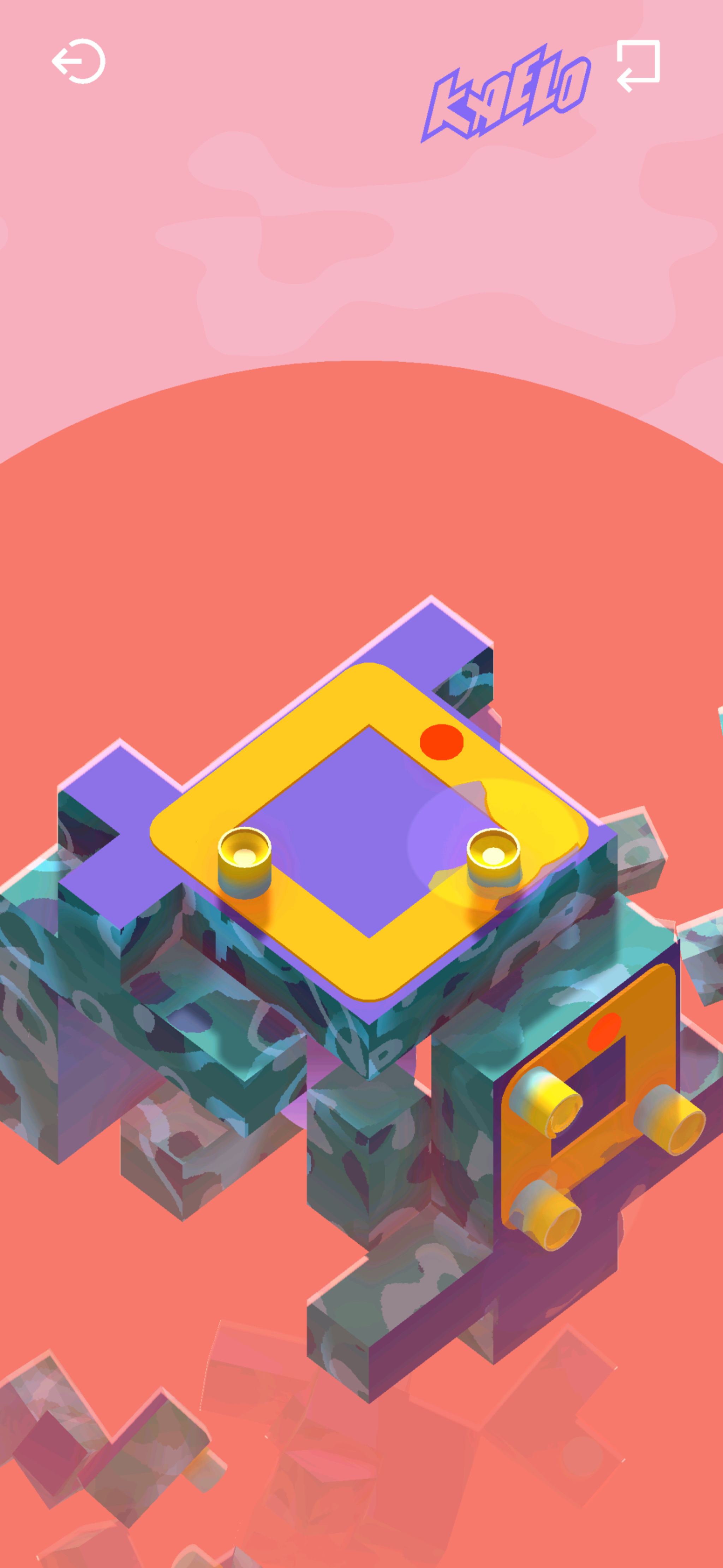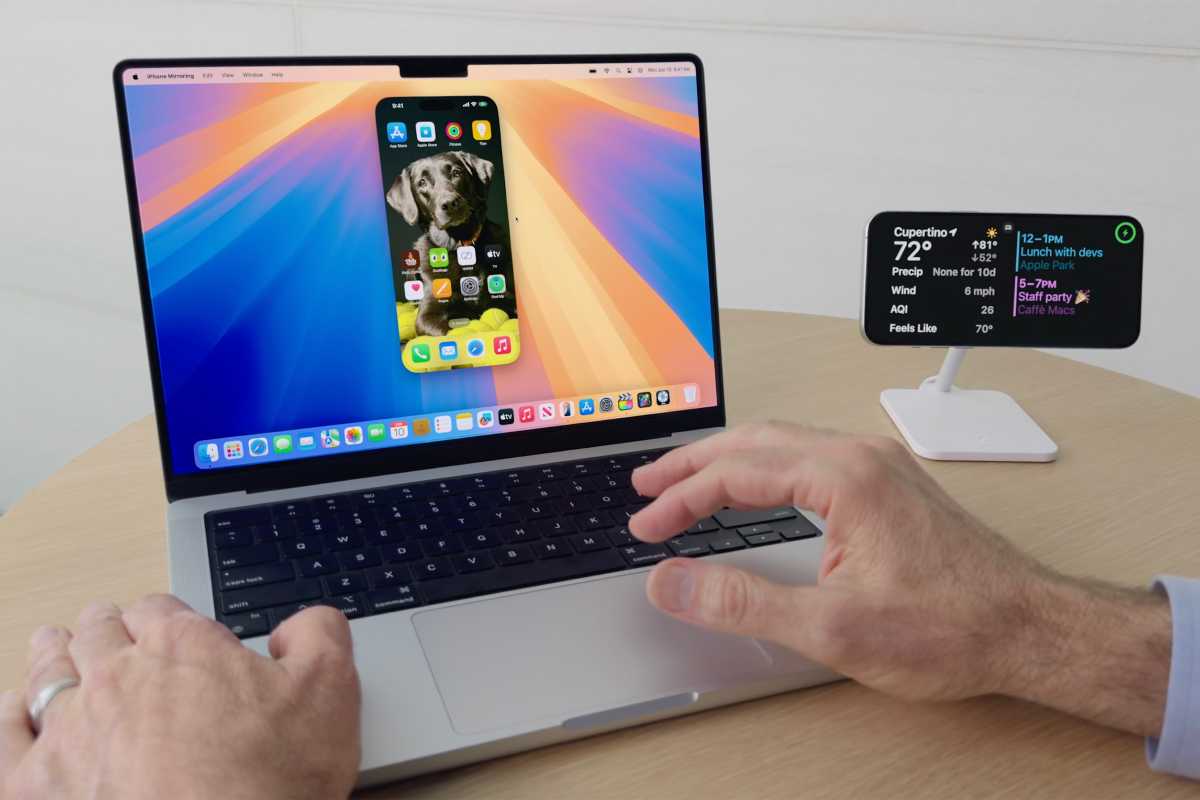Behind the Design: The rhythms of Rytmos
5 min read

Rytmos is a game that sounds as good as it looks.
With its global rhythms, sci-fi visuals, and clever puzzles, the 2024 Apple Design Award winner for Interaction is both a challenge and an artistic achievement. To solve each level, players must create linear pathways on increasingly complex boards, dodging obstacles and triggering buttons along the way. It’s all set to a world-music backdrop; different levels feature genres as diverse as Ethiopian jazz, Hawaiian slack key guitar, and Gamelan from Indonesia, just to name a few.
And here’s the hook: Every time you clear a level, you add an instrument to an ever-growing song.
“The idea is that instead of reacting to the music, you’re creating it,” says Asger Strandby, cofounder of Floppy Club, the Denmark-based studio behind Rytmos. “We do a lot to make sure it doesn’t sound too wild. But the music in Rytmos is entirely generated by the way you solve the puzzles.”
ADA FACT SHEET
Rytmos
- Winner: Interaction
- Team: Floppy Club
- Available on: iPhone, iPad
- Team size: 5
Download Rytmos from the App Store
The artful game is the result of a partnership that dates back decades. In addition to being developers, Strandby and Floppy Club cofounder Niels Böttcher are both musicians who hail from the town of Aarhus in Denmark. “It’s a small enough place that if you work in music, you probably know everyone in the community,” laughs Böttcher.
The music in Rytmos comes mostly from traveling and being curious.
Niels Böttcher, Floppy Club cofounder
The pair connected back in the early 2000s, bonding over music more than games. “For me, games were this magical thing that you could never really make yourself,” says Strandby. “I was a geeky kid, so I made music and eventually web pages on computers, but I never really thought I could make games until I was in my twenties.” Instead, Strandby formed bands like Analogik, which married a wild variety of crate-digging samples — swing music, Eastern European folk, Eurovision-worthy pop — with hip-hop beats. Strandby was the frontman, while Böttcher handled the behind-the-scenes work. “I was the manager in everything but name,” he says.
The band was a success: Analogik went on to release five studio albums and perform at Glastonbury, Roskilde, and other big European festivals. But when their music adventure ended, the pair moved back into separate tech jobs for several years — until the time came to join forces again. “We found ourselves brainstorming one day, thinking about, ‘Could we combine music and games in some way?’” says Böttcher. “There are fun similarities between the two in terms of structures and patterns. We thought, ‘Well, let’s give it a shot.’”

The duo launched work on a rhythm game that was powered by their histories and travels. “I’ve collected CDs and tapes from all over the world, so the genres in Rytmos are very carefully chosen,” says Böttcher. “We really love Ethiopian jazz music, so we included that. Gamelan music (traditional Indonesian ensemble music that’s heavy on percussion) is pretty wild, but incredible. And sometimes, you just hear an instrument and say, ‘Oh, that tabla has a really nice sound.’ So the music in Rytmos comes mostly from traveling and being curious.”
The game took shape early, but the mazes in its initial versions were much more intricate. To help bring them down to a more approachable level, the Floppy Club team brought on art director Niels Fyrst. “He was all about making things cleaner and clearer,” says Böttcher. “Once we saw what he was proposing — and how it made the game stronger — we realized, ‘OK, maybe we’re onto something.’”
Success in Rytmos isn’t just that you’re beating a level. It’s that you’re creating something.
Asger Strandby, Floppy Club cofounder
Still, even with a more manageable set of puzzles, a great deal of design complexity remained. Building Rytmos levels was like stacking a puzzle on a puzzle; the team not only had to build out the levels, but also create the music to match. To do so, Strandby and his brother, Bo, would sketch out a level and then send it over to Böttcher, who would sync it to music — a process that proved even more difficult than it seems.
“The sound is very dependent on the location of the obstacles in the puzzles,” says Strandby. “That’s what shapes the music that comes out of the game. So we’d test and test again to make sure the sound didn’t break the idea of the puzzle.”

The process, he says, was “quite difficult” to get right. “Usually with something like this, you create a loop, and then maybe add another loop, and then add layers on top of it,” says Böttcher. “In Rytmos, hitting an emitter triggers a tone, percussion sound, or chord. One tone hits another tone, and then another, and then another. In essence, you’re creating a pattern while playing the game.”
We’ve actually gone back to make some of the songs more imprecise, because we want them to sound human.
Niels Böttcher, Floppy Club cofounder
The unorthodox approach leaves room for creativity. “Two different people’s solutions can sound different,” says Strandby. And when players win a level, they unlock a “jam mode” where they can play and practice freely. “It’s just something to do with no rules after all the puzzling,” laughs Strandby.
Yet despite all the technical magic happening behind the scenes, the actual musical results had to have a human feel. “We’re dealing with genres that are analog and organic, so they couldn’t sound electronic at all,” says Böttcher. “We’ve actually gone back to make some of the songs more imprecise, because we want them to sound human.”
Best of all, the game is shot through with creativity and cleverness — even offscreen. Each letter in the Rytmos logo represents the solution to a puzzle. The company’s logo is a 3.5-inch floppy disk, a little nod to their first software love. (“That’s all I wished for every birthday,” laughs Böttcher.) And both Böttcher and Strandby hope that the game serves as an introduction to both sounds and people they might not be familiar with. “Learning about music is a great way to learn about a culture,” says Strandby.
But mostly, Rytmos is an inspirational experience that meets its lofty goal. “Success in Rytmos isn’t just that you’re beating a level,” says Strandby. “It’s that you’re creating something.”
Meet the 2024 Apple Design Award winners
Behind the Design is a series that explores design practices and philosophies from finalists and winners of the Apple Design Awards. In each story, we go behind the screens with the developers and designers of these award-winning apps and games to discover how they brought their remarkable creations to life.


